-
 Bitcoin
Bitcoin $94,175.9341
-0.45% -
 Ethereum
Ethereum $1,797.2526
-1.80% -
 Tether USDt
Tether USDt $0.9998
-0.02% -
 XRP
XRP $2.0914
-4.02% -
 BNB
BNB $597.8377
0.98% -
 Solana
Solana $144.2395
-1.61% -
 USDC
USDC $1.0000
0.00% -
 Dogecoin
Dogecoin $0.1677
-3.47% -
 TRON
TRON $0.2453
-0.99% -
 Cardano
Cardano $0.6564
-4.59% -
 Sui
Sui $3.2963
-4.27% -
 Chainlink
Chainlink $13.4246
-4.69% -
 Avalanche
Avalanche $19.6453
-1.56% -
 UNUS SED LEO
UNUS SED LEO $8.6682
-4.59% -
 Stellar
Stellar $0.2563
-4.26% -
 Toncoin
Toncoin $2.9933
-1.17% -
 Shiba Inu
Shiba Inu $0.0...01252
-3.20% -
 Hedera
Hedera $0.1726
-2.80% -
 Bitcoin Cash
Bitcoin Cash $359.1546
-0.22% -
 Hyperliquid
Hyperliquid $19.9280
-3.34% -
 Litecoin
Litecoin $81.7450
-8.38% -
 Polkadot
Polkadot $3.8700
-2.94% -
 Dai
Dai $1.0001
0.01% -
 Monero
Monero $284.8938
2.89% -
 Bitget Token
Bitget Token $4.2954
-0.62% -
 Ethena USDe
Ethena USDe $1.0002
0.00% -
 Pi
Pi $0.5866
-1.01% -
 Pepe
Pepe $0.0...07897
-5.11% -
 Bittensor
Bittensor $370.6814
1.71% -
 Uniswap
Uniswap $4.8861
-4.02%
What is the forced liquidation mechanism of Gate.io contract? How to avoid forced liquidation?
To avoid forced liquidation on Gate.io, monitor your margin level, adjust position sizes, add more margin, use stop-loss orders, and diversify your portfolio.
May 06, 2025 at 10:56 am
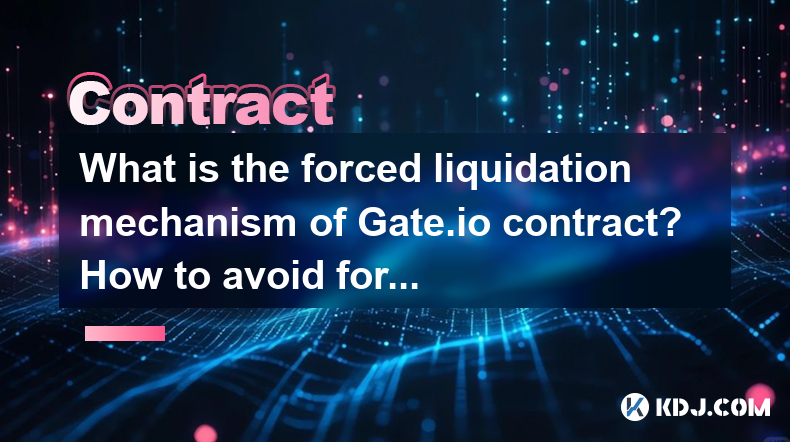
The forced liquidation mechanism of Gate.io contract is a critical aspect of trading futures and perpetual contracts on the platform. Understanding this mechanism and learning how to avoid forced liquidation are essential for traders to manage their risks effectively. In this article, we will delve into the details of Gate.io's forced liquidation process and provide strategies to help you avoid it.
Understanding Forced Liquidation on Gate.io
Forced liquidation on Gate.io occurs when a trader's position is automatically closed by the platform due to insufficient margin to maintain the position. This mechanism is designed to protect both the trader and the platform from excessive losses. When the margin level of a position falls below a certain threshold, Gate.io will initiate the liquidation process to prevent further losses.
The margin level is calculated by dividing the equity (the account balance plus or minus unrealized profit or loss) by the used margin (the amount of margin required to maintain the position). If the margin level drops to the liquidation threshold, the position is at risk of being liquidated. For Gate.io, the liquidation threshold is typically set at a margin level of 100%, meaning that if your equity equals the used margin, your position may be liquidated.
How Does Forced Liquidation Work on Gate.io?
When the margin level of your position reaches the liquidation threshold, Gate.io will initiate the forced liquidation process. Here is how it works:
- Monitoring: Gate.io continuously monitors the margin level of all open positions.
- Triggering: Once the margin level hits the liquidation threshold, the liquidation process is triggered.
- Closing the Position: The platform will automatically close the position at the best available market price to minimize losses.
- Settlement: After the position is closed, any remaining equity will be credited back to your account, minus any fees associated with the liquidation process.
It is important to note that during periods of high volatility, the market price at which the position is closed may be less favorable than expected, resulting in larger losses.
How to Avoid Forced Liquiduation on Gate.io
To avoid forced liquidation on Gate.io, traders can implement several strategies to manage their margin levels effectively. Here are some key approaches:
- Monitor Your Margin Level: Regularly check your margin level to ensure it remains well above the liquidation threshold. You can do this by accessing the "Positions" section on the Gate.io trading platform.
- Adjust Your Position Size: Reduce the size of your position if the margin level is approaching the liquidation threshold. This can be done by closing part of your position or reducing your leverage.
- Add More Margin: If you notice your margin level is getting close to the liquidation threshold, you can add more funds to your account to increase your equity and improve your margin level.
- Use Stop-Loss Orders: Implement stop-loss orders to automatically close your position at a predetermined price level, preventing your margin level from dropping too low.
- Diversify Your Portfolio: Spreading your investments across different assets can help mitigate the risk of a single position causing forced liquidation.
Detailed Steps to Adjust Your Position on Gate.io
If you find that your margin level is approaching the liquidation threshold, you can take immediate action to adjust your position. Here are the detailed steps to do so on Gate.io:
- Access the Positions Section: Log into your Gate.io account and navigate to the "Positions" section of the trading platform.
- Select the Position: Identify the position that is at risk of liquidation and click on it to view the details.
- Reduce Position Size: To reduce your position size, click on the "Close Position" button and enter the amount you wish to close. You can close part or all of your position.
- Add More Margin: If you want to add more margin to your account, go to the "Wallet" section, select the appropriate currency, and transfer funds to your trading account.
- Confirm the Action: After making the necessary adjustments, confirm the action to update your position and margin level.
By following these steps, you can proactively manage your positions and avoid forced liquidation.
Using Stop-Loss Orders to Prevent Forced Liquidation
Stop-loss orders are an effective tool for managing risk and preventing forced liquidation. Here is how to set up a stop-loss order on Gate.io:
- Access the Order Section: Navigate to the "Orders" section on the Gate.io trading platform.
- Select the Contract: Choose the futures or perpetual contract for which you want to set a stop-loss order.
- Create a Stop-Loss Order: Click on "Create Order" and select "Stop-Loss" from the order type options.
- Set the Trigger Price: Enter the price at which you want the stop-loss order to be triggered. This should be a price level that you are comfortable with to limit your losses.
- Set the Order Size: Specify the amount of the position you want the stop-loss order to cover. You can set it to cover the entire position or just a portion.
- Confirm the Order: Review the details of your stop-loss order and confirm it to place the order.
Once the market price reaches the trigger price, the stop-loss order will be executed, closing your position and preventing it from reaching the liquidation threshold.
Frequently Asked Questions
Q1: Can I set multiple stop-loss orders for the same position on Gate.io?
Yes, you can set multiple stop-loss orders for the same position on Gate.io. This allows you to create different levels of protection for your position, with each stop-loss order triggered at a different price level.
Q2: What happens if the market price gaps beyond my stop-loss order price on Gate.io?
If the market price gaps beyond your stop-loss order price, the order will be executed at the next available price. This may result in a slippage, where the execution price is less favorable than the stop-loss price you set. However, this still helps to limit your losses compared to not having a stop-loss order in place.
Q3: Is there a fee associated with forced liquidation on Gate.io?
Yes, Gate.io charges a liquidation fee when a position is forcibly liquidated. The fee is typically a percentage of the liquidation amount and is used to cover the costs associated with the liquidation process. It is important to be aware of these fees when trading on the platform.
Q4: Can I manually close my position before it reaches the liquidation threshold on Gate.io?
Yes, you can manually close your position at any time before it reaches the liquidation threshold. To do this, navigate to the "Positions" section on the Gate.io platform, select the position you want to close, and click on the "Close Position" button. Enter the amount you wish to close and confirm the action to manually close your position.
Disclaimer:info@kdj.com
The information provided is not trading advice. kdj.com does not assume any responsibility for any investments made based on the information provided in this article. Cryptocurrencies are highly volatile and it is highly recommended that you invest with caution after thorough research!
If you believe that the content used on this website infringes your copyright, please contact us immediately (info@kdj.com) and we will delete it promptly.
- Trump set to hold gala dinner for memecoin holders as criticism and impeachment talk grow.
- 2025-05-06 16:25:12
- 3 Reasons Why Kaspa (KAS) Price Is Flat Following the Crescendo Update
- 2025-05-06 16:25:12
- 🚨 $BTC /USDT – Bullish or Bearish Divergence at Play? 🔥
- 2025-05-06 16:20:12
- Ethereum (ETH) Price Prediction: Market Dynamics Suggest the Long-term Uptrend Remains Intact
- 2025-05-06 16:20:12
- Bitcoin (BTC) Price Prediction: BTC Slumps Below $98,000 Resistance, Targeting $93,500 Support
- 2025-05-06 16:15:12
- Pre-emptive Bug Fixes to ZK ElGamal Proof Program
- 2025-05-06 16:15:12
Related knowledge
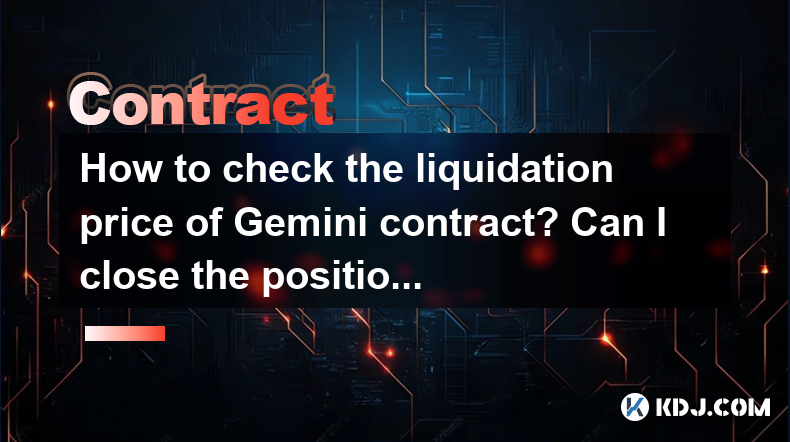
How to check the liquidation price of Gemini contract? Can I close the position manually?
May 04,2025 at 03:35am
When trading on the Gemini exchange, understanding how to monitor your liquidation price and manage your positions effectively is crucial for successful trading. This article will guide you through the process of checking the liquidation price for Gemini contracts and explain how you can manually close a position. Understanding Liquidation Price on Gemi...
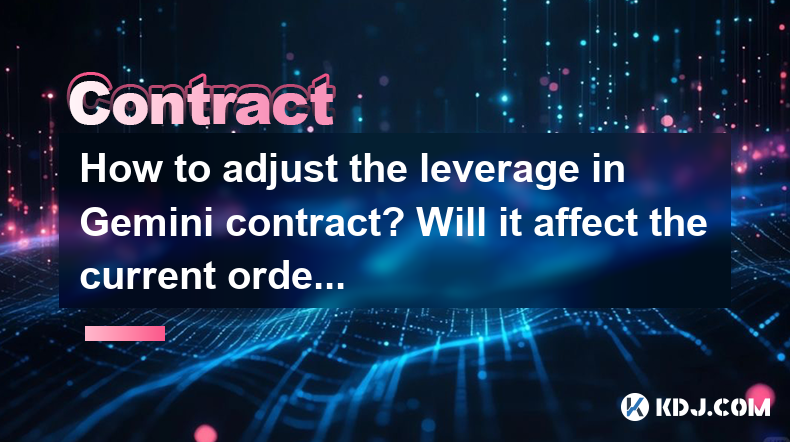
How to adjust the leverage in Gemini contract? Will it affect the current order?
May 02,2025 at 08:07pm
Introduction to Leverage in Gemini ContractsGemini, a well-known cryptocurrency exchange, offers futures contracts that allow traders to speculate on the future price of cryptocurrencies. One of the key features of these contracts is the ability to use leverage, which can amplify both potential gains and losses. Leverage in Gemini contracts refers to th...
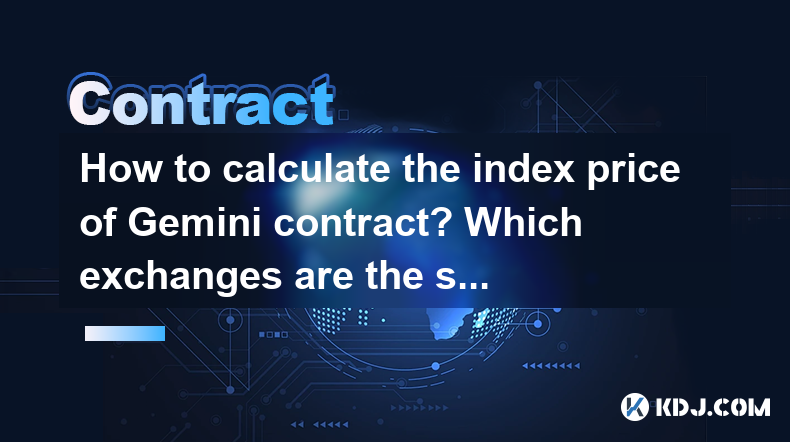
How to calculate the index price of Gemini contract? Which exchanges are the sources?
May 03,2025 at 02:28am
The index price of a Gemini contract is a crucial metric used to determine the fair value of a cryptocurrency futures contract on the Gemini exchange. This index price is calculated using a methodology that aims to provide a reliable and transparent reference price for traders and investors. In this article, we will delve into the specifics of how the i...
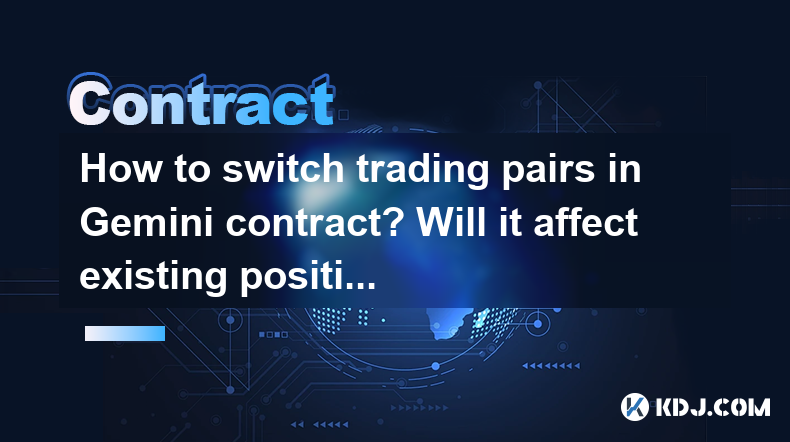
How to switch trading pairs in Gemini contract? Will it affect existing positions?
May 02,2025 at 01:43am
Switching trading pairs in the Gemini contract can be a crucial aspect of managing your cryptocurrency portfolio. This guide will walk you through the process of switching trading pairs and discuss whether this action will affect your existing positions. Understanding these elements is essential for effective trading on the Gemini platform. Understandin...
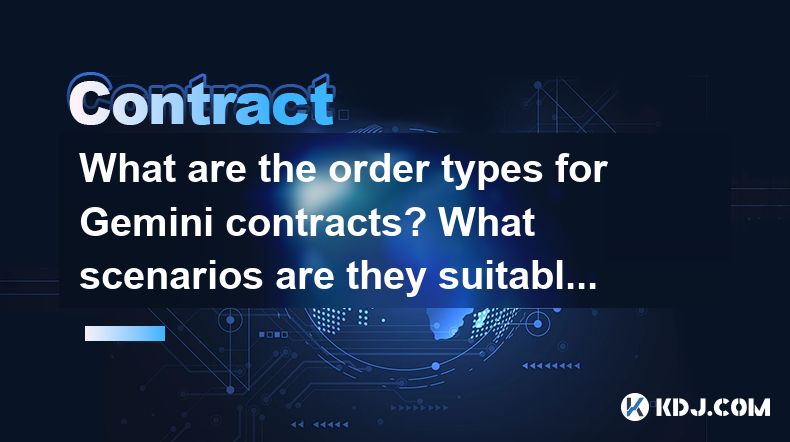
What are the order types for Gemini contracts? What scenarios are they suitable for?
May 03,2025 at 10:42pm
Gemini, a well-known cryptocurrency exchange, offers a variety of order types for trading contracts. Understanding these order types and their suitable scenarios can help traders execute their strategies more effectively. This article will delve into the different order types available on Gemini for contracts and explore the scenarios in which they are ...
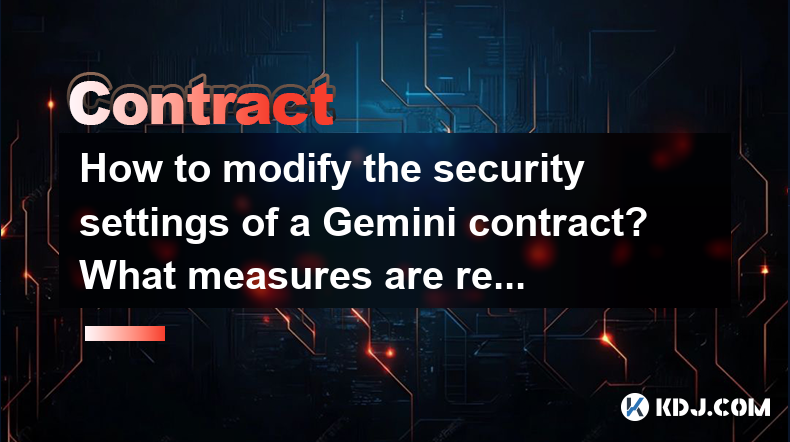
How to modify the security settings of a Gemini contract? What measures are recommended?
May 02,2025 at 06:35pm
Modifying the security settings of a Gemini contract and implementing recommended security measures are crucial steps in safeguarding your cryptocurrency assets. This article will guide you through the process of adjusting security settings on the Gemini platform and outline the best practices for maintaining the highest level of security for your contr...

How to check the liquidation price of Gemini contract? Can I close the position manually?
May 04,2025 at 03:35am
When trading on the Gemini exchange, understanding how to monitor your liquidation price and manage your positions effectively is crucial for successful trading. This article will guide you through the process of checking the liquidation price for Gemini contracts and explain how you can manually close a position. Understanding Liquidation Price on Gemi...

How to adjust the leverage in Gemini contract? Will it affect the current order?
May 02,2025 at 08:07pm
Introduction to Leverage in Gemini ContractsGemini, a well-known cryptocurrency exchange, offers futures contracts that allow traders to speculate on the future price of cryptocurrencies. One of the key features of these contracts is the ability to use leverage, which can amplify both potential gains and losses. Leverage in Gemini contracts refers to th...

How to calculate the index price of Gemini contract? Which exchanges are the sources?
May 03,2025 at 02:28am
The index price of a Gemini contract is a crucial metric used to determine the fair value of a cryptocurrency futures contract on the Gemini exchange. This index price is calculated using a methodology that aims to provide a reliable and transparent reference price for traders and investors. In this article, we will delve into the specifics of how the i...

How to switch trading pairs in Gemini contract? Will it affect existing positions?
May 02,2025 at 01:43am
Switching trading pairs in the Gemini contract can be a crucial aspect of managing your cryptocurrency portfolio. This guide will walk you through the process of switching trading pairs and discuss whether this action will affect your existing positions. Understanding these elements is essential for effective trading on the Gemini platform. Understandin...

What are the order types for Gemini contracts? What scenarios are they suitable for?
May 03,2025 at 10:42pm
Gemini, a well-known cryptocurrency exchange, offers a variety of order types for trading contracts. Understanding these order types and their suitable scenarios can help traders execute their strategies more effectively. This article will delve into the different order types available on Gemini for contracts and explore the scenarios in which they are ...

How to modify the security settings of a Gemini contract? What measures are recommended?
May 02,2025 at 06:35pm
Modifying the security settings of a Gemini contract and implementing recommended security measures are crucial steps in safeguarding your cryptocurrency assets. This article will guide you through the process of adjusting security settings on the Gemini platform and outline the best practices for maintaining the highest level of security for your contr...
See all articles




















































































